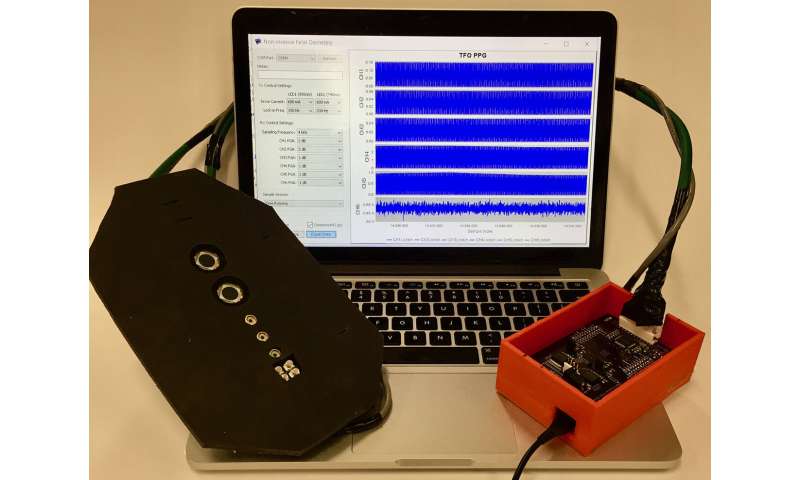
A device to directly measure blood oxygen saturation in a fetus during labor has been developed by researchers at the University of California, Davis. By providing better information about the health of a fetus right before birth, the device could both reduce the rate of Cesarean sections and improve outcomes in difficult deliveries.
Since the 1970s, U.S. obstetricians have monitored fetal heart rate and the mother’s rate of contractions as a way to assess the health of the fetus during labor. Taken together, these measurements are a proxy for fetal blood oxygen levels. If the fetus is deprived of oxygen before birth, it may suffer lasting damage or die—leading doctors to perform C-sections if they think a fetus is getting into trouble.
This practice has led to a high rate of C-sections, but without much improvement in the rate of fetal complications associated with oxygen deficiency.
“We wondered if we could build a device to measure fetal blood oxygen saturation directly,” said Soheil Ghiasi, professor of electrical and computer engineering at UC Davis.
Results from the work have been presented at the Society for Maternal-Fetal Medicine pregnancy meeting in Grapevine, Texas in February, and in an upcoming issue of IEEE Transactions in Biomedical Engineering.
Direct measurement of fetal blood oxygen saturation
The new device is based on the same principle as the oximeter you might have slipped on your finger at the doctor’s office. Hemoglobin in red blood cells absorbs colors of light differently depending on how much oxygen it has bound. A finger oximeter measures different wavelengths of light to calculate the oxygen saturation in your blood.

Measuring blood oxygen saturation in a fetus within the mother poses additional problems. First, there’s more tissue to get through to reach the fetus, so only a tiny amount of light can be reflected back to be measured non-invasively.
Second, there’s the problem of separating the signal from fetal blood from that of the mother.
Experimental tests in pregnant sheep, published in IEEE Transactions of Biomedical Engineering, show that the new device could accurately measure oxygen levels in the fetus.
Source: Read Full Article
